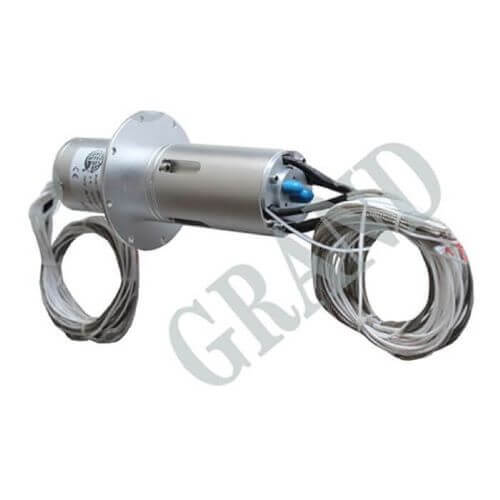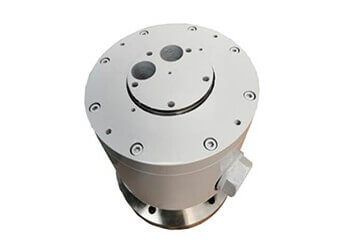Electrical rotary joints are components used to transfer electrical current and data signals between a stationary and rotating part. These rotating electrical connection components, also known as rotary electrical contacts or rotary slip ring electrical, are used in a variety of industries.
How Do Electrical Rotary Joints Work?
A rotary electrical joint, also known as a slip ring, is a component used to provide a continuous electrical connection between a stationary and a rotating structure. They are used in a wide variety of applications, including communications systems, medical equipment, industrial automation, and robotics.
A typical rotary joint consists of a stationary body, which houses the stationary electrical contacts, and a rotating assembly, which contains the rotating electrical contacts. The two pieces are connected by a series of springs and bearings to provide a low-friction connection, allowing the rotating assembly to turn freely.
The stationary contacts are connected to a power source or electrical circuit, while the rotating contacts are connected to the device or system to be powered. When the rotating assembly turns, the electrical contacts pass over each other, creating an electrical connection. This connection is maintained as long as the rotation continues, providing a continuous flow of electricity from the power source to the device or system.
Rotary joints can be designed for a variety of applications, including low voltage, high current, and high power. The size and shape of the electrical contacts, as well as the materials used to construct the rotary joint, will vary depending on the application. To ensure reliable operation, the contacts must be carefully designed and inspected, and the rotating assembly must be properly maintained.

Importance of Electrical Rotary Joint in Various Industries
Industries Where Electrical Rotary Joints Are Used
1. Automotive:
They are used in the automotive industry to provide power and signal transmission between stationary and rotating parts. This can include transmissions, engines, pumps, and other components.
2. Aerospace:
A rotary electrical joint is used in the aerospace industry to provide power and signal transmission between stationary and rotating parts. This can include rotary actuators, flight control systems, and other components.
3. Food and Beverage:
They are used in the food and beverage industry to provide power and signal transmission between stationary and rotating parts. This can include conveyor belts, mixers, and other components.
4. Offshore:
They are used in the offshore industry to provide power and signal transmission between stationary and rotating parts. This can include drilling rigs, pumps, and other components.
5. Printing:
They are used in the printing industry to provide power and signal transmission between stationary and rotating parts. This can include printing presses, conveyor belts, and other components.
Benefits of Electrical Rotary Joints
The primary benefit of electric rotary joints is their ability to transfer current and data signals reliably. They also offer several other advantages.
1. Increased reliability: Electric rotary joints are designed to maintain a continuous, error-free connection between two systems even when they are in motion. This means that the connection will not be interrupted, reducing the risk of signal loss and potential system failure.
2. Increased efficiency: Electrical rotary joints allow for a more efficient transfer of electrical signals, which can reduce the amount of power needed to operate the equipment. This can help to reduce energy costs and improve system performance.
3. Reduced downtime: Electrical rotary joints help to reduce maintenance and repair costs by ensuring a more reliable connection between the two components. This can help reduce downtime, increasing the overall efficiency of the system.
4. Improved safety: An Electric rotary joint provides a better level of safety by reducing the risk of electrocution due to faulty connections.
5. Reduced noise: Electrical rotary joints are designed to reduce noise, which can help to improve the overall working environment. This can help to reduce employee stress and improve productivity.
6. Continuous Rotation: They allow for 360-degree continuous rotation without the risk of cable entanglement.
7. Durability: Designed to withstand harsh environments, including extreme temperatures, humidity, and vibration.
8. Compact Design: Modern slip rings are compact, making them suitable for applications with space constraints.
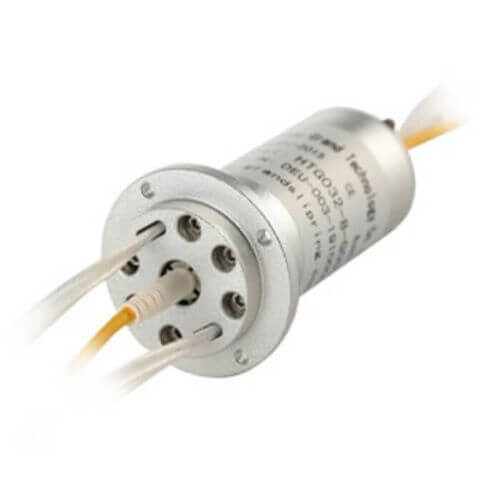
Essential Factors to Consider When Buying Electrical Rotary Joints
1. Power Requirements: Before purchasing an electrical rotary joint, it is important to consider the power requirements of the application. This includes the voltage, current, frequency, and any other power requirements specific to the application.
2. Temperature Range: The temperature range of the environment needs to be taken into consideration when selecting an electrical rotary joint. The joint needs to be able to withstand temperature extremes while still providing a reliable connection.
3. Size Requirements: The size of the electrical rotary joint is also important. The size needs to be appropriate for the application so that it fits properly and does not cause more stress on the system than is necessary.
4. Materials: The material used for the electrical rotary joint is important to consider. Certain materials are more durable and better suited for certain applications, so it is important to make sure the material used is appropriate for the application.
5. Connectors: The type of connector used on the rotary joint is also important to consider. Different connectors have different compatibility requirements, so make sure the connector is compatible with the system.
6. Cost: The cost of the electrical rotary joint should also be taken into consideration. It is important to make sure the cost of the joint is within the budget of the project.
7. Maintenance: The maintenance requirements of the electrical rotary joint should also be considered. Regular maintenance can help prolong the life of the joint and ensure that it remains reliable over time.
Installation and Maintenance Tips of Electrical Rotary
Proper installation and regular maintenance of electrical rotary joints (slip rings) are crucial for their optimal performance and longevity. Here’s a detailed guide on installation techniques, maintenance practices, and troubleshooting common issues:
Proper Installation Techniques
- Alignment: Ensure proper alignment of the rotary joint with the rotating and stationary parts to avoid undue stress and wear. Misalignment can lead to premature failure.
- Mounting: Securely mount the rotary joint to prevent movement or vibration during operation. Use appropriate brackets, clamps, or mounting plates as recommended by the manufacturer.
- Electrical Connections: Make sure all electrical connections are tight and secure. Use appropriate connectors and follow the manufacturer’s wiring diagrams to avoid connection issues.
- Rotation Testing: After installation, manually rotate the joint to check for smooth operation and ensure there are no obstructions or unusual noises.
- Environmental Protection: If the joint is installed in a harsh environment, ensure it is adequately protected against dust, moisture, and corrosive substances. Use protective covers or enclosures if necessary.
Regular Maintenance Practices
- Visual Inspection: Regularly inspect the rotary joint for signs of wear, corrosion, or damage. Check for loose connections, worn brushes, or any foreign objects that might have entered the housing.
- Cleaning: Keep the joint clean by removing dust, debris, and any buildup of contaminants. Use appropriate cleaning agents that do not damage the components.
- Lubrication: Some rotary joints may require periodic lubrication. Follow the manufacturer’s recommendations for the type and frequency of lubrication.
- Brush Replacement: Inspect the brushes regularly for wear. Replace them according to the manufacturer’s guidelines to maintain optimal electrical contact and performance.
- Monitoring Performance: Keep an eye on the performance metrics of the rotary joint, such as electrical resistance, signal quality, and noise levels. Any deviations from normal can indicate potential issues.
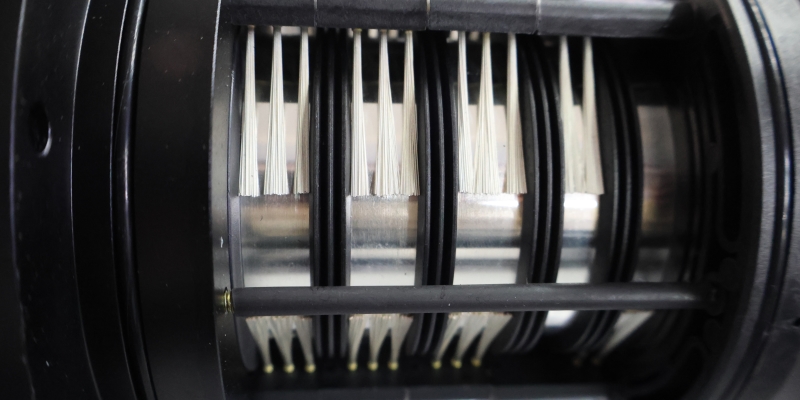
Common Issues and Troubleshooting
- Intermittent Signal Loss:
- Cause: Worn brushes or poor contact between the brushes and rings.
- Solution: Inspect and replace worn brushes. Ensure proper alignment and contact pressure.
- Excessive Noise or Heat:
- Cause: Misalignment, excessive friction, or overloading.
- Solution: Check for proper alignment and mounting. Lubricate moving parts if required. Ensure the load is within the specified limits.
- Corrosion or Contamination:
- Cause: Exposure to harsh environmental conditions.
- Solution: Clean the rotary joint regularly and use protective measures like seals or covers. Consider using joints with corrosion-resistant materials.
- Mechanical Wear:
- Cause: High rotational speeds, misalignment, or inadequate lubrication.
- Solution: Inspect for wear and tear. Adjust alignment and ensure proper lubrication. Replace worn parts as needed.
- Electrical Noise or Signal Distortion:
- Cause: Poor electrical contact, worn brushes, or interference.
- Solution: Inspect and replace brushes if necessary. Check for proper grounding and shielding to minimize interference.
- Overheating:
- Cause: Excessive current load or poor ventilation.
- Solution: Ensure the current load is within the specified limits. Improve ventilation around the rotary joint to dissipate heat.
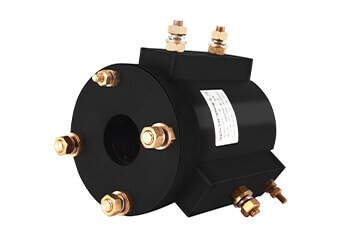
Additional Tips
- Follow Manufacturer’s Guidelines: Always adhere to the manufacturer’s instructions for installation, maintenance, and troubleshooting. Each rotary joint may have specific requirements based on its design and application.
- Documentation: Keep detailed records of installation, maintenance, and any issues encountered. This can help in identifying patterns and preventing future problems.
- Training: Ensure that personnel responsible for the installation and maintenance of rotary joints are adequately trained and familiar with the equipment.
By following these installation and maintenance tips, you can ensure the reliable and efficient operation of electrical rotary joints, thereby enhancing the performance and longevity of your equipment.
Conclusion
Electrical rotary joints are essential components in a range of industrial applications. From rotary electrical contacts to rotating electrical connections, they enable reliable current and data transmission even in harsh conditions. They are used in a variety of industries, including the medical, automotive, aerospace, and robotics fields. Moreover, they offer several other benefits, such as robustness, durability, and ease of installation and maintenance.
See What We Can Do

